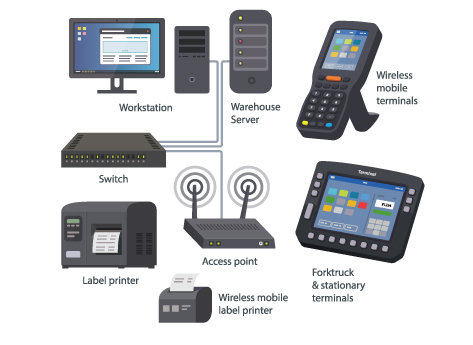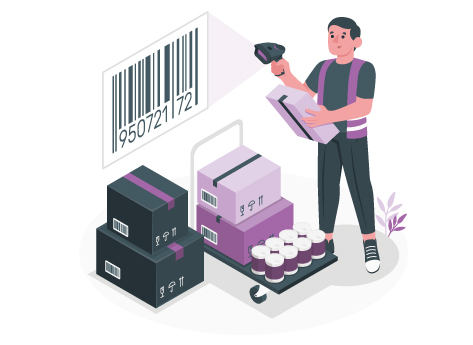Call Us :8615298359310
Call Us :8615298359310
Blog
Key Elements of Warehouse Design and Layout
The efficiency of your warehouse is not synonymous with its size. A well-structured and well-managed warehouse, regardless of its square footage, can potentially streamline your entire shipping process. The layout of the warehouse, from the storage area to the picking area, plays a crucial role in achieving this efficiency. The design should be tailored to the warehouse's specific needs, with due consideration given to factors such as product type, product turnover rate, and the warehouse's overall operational goals.
The Importance of Logical Warehouse Planning
Before we delve into storage, let's consider the critical elements that need to be designated in the warehouse. These include the picking area, storage area, live broadcast area, quality inspection area, packaging area, and auxiliary material area, among others. These should be designed based on the warehouse floor plan, something that can be efficiently visualized using tools like CAD. A well-prepared initial layout and workflow can prevent future congestion and confusion within the warehouse. The division of areas, the determination of routes, and the decision on where to place incoming goods for quality inspection, and where to store products after inspection, all these involve logical thinking. Therefore, a well-thought-out plan is essential to ensure smooth operations.
SKU Management and Barcode System in Warehousing
Once the warehouse is adequately divided, the next step is to store the goods. An increasingly popular method for ensuring accurate delivery and inventory is SKU (Stock Keeping Unit) management, which involves printing barcodes on goods or bins. The barcodes can be scanned using a PDA (Personal Digital Assistant), effectively creating a one-to-one correspondence between a product and a barcode. This method of stock management allows for quick, easy, and accurate tracking of inventory levels, as well as facilitating faster picking, packing, and shipping processes.
Adapting Barcode Design to Specific Warehouse Needs
The design of the barcode can be modified based on the actual conditions on site. Information like quality inspectors, SKU, SPU, and supplier information can all be reflected on the barcode, facilitating the development of subsequent business processes and the tracing of customer complaints. A well-designed barcode not only provides a means of identifying a product but also carries valuable information that can aid in the management and resolution of issues that may arise in the warehouse.
Leveraging RFID Technology for Efficient Inventory Management
If your budget allows, you could also utilize popular technologies like RFID (Radio Frequency Identification) for bin binding. Once data is synchronized with display terminals (like PC and APP), it becomes easier to check the inventory quantity and specific location of a particular SKU, style, or manufacturer's goods. The use of RFID technology offers real-time visibility into inventory levels, reduces the chance of human error, and can significantly improve warehouse efficiency.
Utilizing Handheld Devices for Streamlined Warehouse Operations
Storing goods involves several operations, such as inventory checking, warehousing, delivery, shelving, unshelving, and returning. These operations can be carried out more accurately and efficiently using handheld devices. These devices, often equipped with barcode or RFID readers, can streamline processes, reduce errors, and increase productivity by providing real-time data and allowing for immediate updates to inventory levels.
Maximizing Efficiency in Small Warehouse Spaces
With intelligent warehouse planning and management, a small warehouse with fewer bins but multiple SKUs can also run smoothly. The key is to devise a storage method for each bin, for example, assigning one SKU to one bin or multiple SKUs to a bin. This approach can greatly enhance storage efficiency and space utilization, even in a limited area. It also allows for easier tracking and management of inventory, which can lead to improved order fulfillment rates and customer satisfaction.
Implementing Coding Rules for Accurate SKU Identification
Furthermore, the coding rules for SKUs can be preset based on the characteristics of the physical goods. For example
The design of the barcode can be modified based on the actual conditions on site. Information like quality inspectors, SKU, SPU, and supplier information can all be reflected on the barcode, facilitating the development of subsequent business processes and the tracing of customer complaints.
If your budget allows, you could also utilize popular technologies like RFID (Radio Frequency Identification) for bin binding. Once data is synchronized with display terminals (like PC and APP), it becomes easier to check the inventory quantity and specific location of a particular SKU, style, or manufacturer's goods.
Storing goods involves several operations, such as inventory checking, warehousing, delivery, shelving, unshelving, and returning. These operations can be carried out more accurately and efficiently using handheld devices.

With intelligent warehouse planning and management, a small warehouse with fewer bins but multiple SKUs can also run smoothly. The key is to devise a storage method for each bin, for example, assigning one SKU to one bin or multiple SKUs to a bin.
Furthermore, the coding rules for SKUs can be preset based on the characteristics of the physical goods. For example, the code "Spring-DPDY-Black-XL" signifies the season, style, color, and size of the product. The handheld terminal can inform you of the code, allowing you to directly identify the product in the bin and take it out, ensuring efficiency and accuracy.
Aside from finished goods, we also need to consider the storage of auxiliary materials and semi-finished products. If the merchant has its own production process, semi-finished product management needs to be introduced. The storage method should be consistent with that of the finished products, and the correlation between finished products and semi-finished products should be managed.
All these operations can be implemented in conjunction with documents, making data more accurate and easier to control. The documents can also include factors such as cost price, purchase price, material cost, and logistics cost, which can facilitate financial settlement and other processes.
Copyright © 2024 Jiangsu VISON Logistics Technology Co., Ltd. All Rights Reserved.  Network Supported
Network Supported
Sitemap | Blog | Xml | Privacy Policy